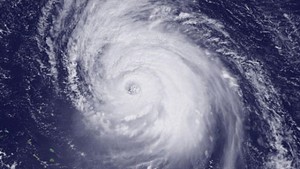 Meteorologists with the Colorado State University (CSU) have agreed with predictions that this year’s hurricane season will be less active, but could include at least three major storms.
Meteorologists with the Colorado State University (CSU) have agreed with predictions that this year’s hurricane season will be less active, but could include at least three major storms.
Weather forecasting service AccuWeather has already forecast a below average season.
Both predictions based the expected reduced activity on a reappearance of El Nino – a weather phenomenon in the Pacific Ocean that impacts global weather patterns. El Nino, which warms the waters of the Pacific Ocean, blocks the development of hurricanes in Atlantic basin.
CSU’s hurricane researcher Phil Klotzbach, is predicting 11 named storms, four hurricanes and two major hurricanes of Category 3 strength or higher.
“April predictions are never super confident, but this year I’m a little less confident given the El Niño issue,” said Klotzbach, who released the report at the National Tropical Weather Conference in South Padre Island, Texas.
“If El Niño does ramp up, that will make for a more quiet hurricane season.”
AccuWeather had said the June 1 to November season “will likely produce about ten storms large enough to be given names by meteorologists”, and half of those could development into hurricanes – three of them large enough to be considered major hurricanes.
The 2016 hurricane season was the most active since 2012 with 15 named storms and seven hurricanes, including Category 4 Hurricane Matthew.
